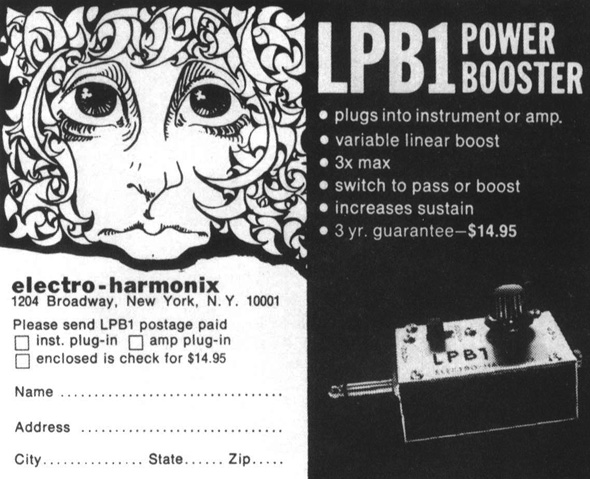Music Industry Issues (Part 1)Tear The Pedals Off Of You
The following is an excerpt from an article the article I originally published in 2013 entitled “Introducing Napalm Beach.” I originally – rather carefully – titled this section of the article “Chris Newman and the northwest fuzz-wah continuum.” This was because I was trying to keep everyone’s feelings in mind – Chris, and others who were influenced by Chris’ music. I was trying to avoid making the claim that Chris’ ideas had been stolen by other artists who became far more successful and who avoided sharing their success or crediting their inspirational source.
However, 2013 was a very different time for me. When I published the article, I was not aware of the bigger picture of what was going on around us. I just knew something was fishy. It was shortly after publishing the article that I realized that more than any other band, it was Kurt Cobain and Nirvana who had adopted Chris’ innovations. And Nirvana was, at one time – a time before the web and YouTube, when celebrities were fewer, and larger – the biggest band in the world. This probably deserves a follow up article. The only reason I never published a follow up earlier is because many others in the industry already knew the things I was just figuring out, and had actually been waiting for years for this day to come, and were busy finalizing plans for the hailstorm of chaos that would ultimately lead to Chris’ death, and because after the initial blast of music industry/FBI blowback, Chris didn’t want me to pursue that line of inquiry anymore. It’s not because the line of inquiry was wrong or would be unfruitful; it’s because Chris was, and had always been, mightily controlled.
Because the original article was intended to be a fairly comprehensive history of Chris’ career as a musician, it’s possible this section could be lost in the din. But considering it all now years later, I realize it was probably the most consequential and controversial part of the article. So I’m republishing it here as an excerpt, and as a foundation for other information which I’ve gleaned since the publication of the article.

Chris Newman and the northwest fuzz-wah continuum
One of the things that is sometimes exasperating is watching people try to figure out where, when, and how northwest punks began to incorporate elements of 60s and 70s psychedelic rock. Most writers credit Mudhoney (and their generation) for these innovations. That’s because Chris has been left out of the story.
If you look at west coast underground rock as a continuum, as I do, Jimi Hendrix had a tremendous impact. The power trio, the bass and drums holding down a solid groove while the guitar goes crazy with feedback and noise – Jimi was the innovator. Jimi’s main effects were fuzz and wah. However, fuzz tone had fallen out of fashion in rock music by the 70s. The Cramps, and Chris Newman, brought it back.
Here are some things I know about Chris as a musician. He has a sharp memory, an ear for melody, and a natural ability to arrange instruments. In addition, he has a driving need to express himself verbally, and through his guitar, and to embody all that is REAL, and all that is rock’n’roll. Simply put: it is his calling.
He grew up in a tight-knight evangelical Christian family. When he began to play, they told him he was playing the “devil’s music”. And he literally believed he could burn in hell for playing it. And he deliberately, consciously, decided that he loved rock’n’roll music so much that he was willing to burn in hell for it.
And then he did burn in hell for it. When he came out of hell, he was still playing, better than ever.
That’s how seriously he takes his music.
He is foremost a guitarist and songwriter, but he also plays bass, drums, keys, whatever. He got his first acoustic guitar at age 13 and his first electric at 14. He was also 14 when acquired his first effect pedal: a Fender Fuzz-Wah. Because, Jimi Hendrix.
At 17 Chris mowed lawns to save up money for an Electro-Harmonix LPB1 distortion pedal which he purchased from the classifieds in Rolling Stone (Issue #2). That was his introduction to Electro-Harmonix. In 1969, Electro-Harmonix developed the Big Muff π. Supposedly Jimi Hendrix was the first musician to buy a (work in progress) Big Muff – but Chris must not have been far behind, because ever since the early 70s, the Big Muff fuzz and Crybaby wah have been his main – and usually his only – effects.
In the 80s – especially the early 80s – Chris also used an Electro-Harmonix Small Clone chorus pedal. The chorus effect was invented in the late 70s. Chris bought a Small Clone in 1980 (likely about the time it first came out), incorporating it into his sound immediately. (You can hear it, for example, on these albums: Trap Sampler, Rock & Roll Hell, and Pugsley.)
Years later, these combinations of effects would become associated with Mudhoney (fuzz/wah) and Nirvana (distortion/chorus).
As for guitar and amp, in Napalm Beach, Chris started out playing his pink fender Strat (that matched his pink converse high-tops) through a Marshall stack. Later, and for many years, his main ax was an old Gibson Flying-V bought from Fred and Toody’s Tombstone Music store.
After seeing the Cramps in 1982, and their original two guitar, Fender Twin reverb-and-fuzz attack, Chris added a Twin Reverb amplifier to his setup. He refashioned a headlight dimmer switch to an amp switcher. For his Napalm Beach shows he could now use the switch to select either the Marshall, or the Twin, or both amps together.